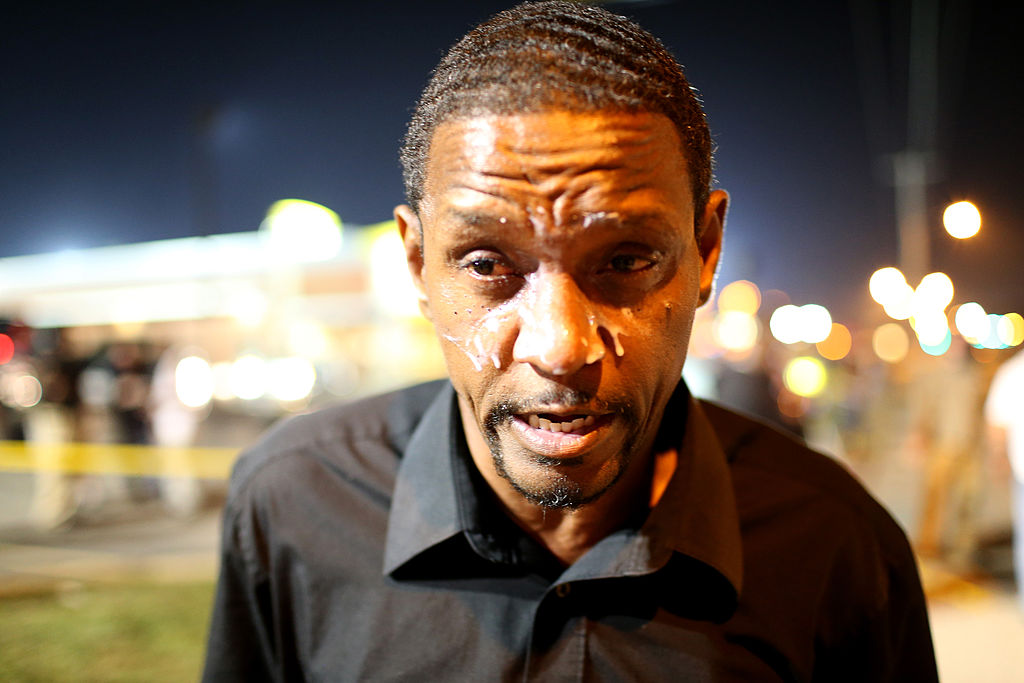Lawyers for the St. Louis City Counselor's Office filed a motion in U.S. District Court March 29 demanding a judge reverse a ruling that placed restrictions on when the city's police can decide a protest is "unlawful," order people to leave a rally or use chemical agents to disperse a crowd.
In the filing, the police department said it was owed "a debt of gratitude" for its conduct during a rally in 2017 despite hours of witness testimony and video footage showing police officers using violence and mace indiscriminately. Four St. Louis police officers were indicted last year in federal court for beating up an undercover cop during that same protest and trying to cover it up.
"Rather, a comprehensive review of the entire video record demonstrates that the St. Louis police on the whole responded to extremely difficult challenges with disciplined effectiveness," the department wrote.
"St. Louisans did not experience the violence and terror of full-scale riots, as did Ferguson or Baltimore in similar situations. For this the community (including plaintiffs, though they may not realize it) owes a debt of gratitude to the vast majority of St. Louis police officers."
The entire situation circles back to a large protest that began after the September 2017 acquittal of St. Louis police officer Jason Stockley, who was found not guilty of murder despite horrific dashcam footage of him shooting 24-year-old Anthony Lamar Smith to death after a car chase.
On September 17, 2017, about 100 protesters and bystanders were harassed, beaten and pepper-sprayed by police. The American Civil Liberties Union (ACLU) sued the city for what took place at the protest, and a preliminary injunction was issued banning the St. Louis police from using the same tactics (macing and harassing innocuous protesters) they used that night.
U.S. District Judge Catherine Perry called the police conduct "arbitrary and retaliatory" and said they intentionally sought to "punish protesters for voicing criticism of police or recording police conduct."
St. Louis police are still allowed to use "chemical agents" to subdue people and defend themselves. They initially agreed with the judge's findings and said they would follow it. But this week, they asked the judge to dissolve the decision in a motion that ridicules the initial ACLU argument and downplays any wrongdoing that may have occurred.
"The streets of the City of St. Louis during September 2017 were not the Edmund Pettus Bridge, much as the ACLU and its plaintiffs want the Court to react as though they were," the motion says.
"Pepper spray or mace is not 'the new fire hose.'"
The city goes on to justify its arbitrary arrests of those in the area on that day, claiming there was "no simple way" to tell who was part of the protest and who was a bystander. According to the filing, police were right to violently arrest everyone because there had been property damage somewhere else in the city, possibly even on different days. Not a single person arrested that day was ever charged with any crimes related to vandalism, and in the end, they were all given misdemeanor "failure to disperse" charges.
The pepper spraying, violent assaults and harassment of protestors is only part of what informed Judge Perry's decision. In other parts of the city, police can be seen on video shooting tear gas and pepper spray balls at innocent bystanders and protesters alike.
The ACLU told the St. Louis Post-Dispatch that filings like these "was common when both sides were nearing the end of exchanging evidence."
Now, check these out:
A Federal Judge Calls St. Louis Police Force Against Protestors Unconstitutional
Five St. Louis Activists, Leaders Who Are Helping To Better The Quality And Treatment Of All Black Lives
